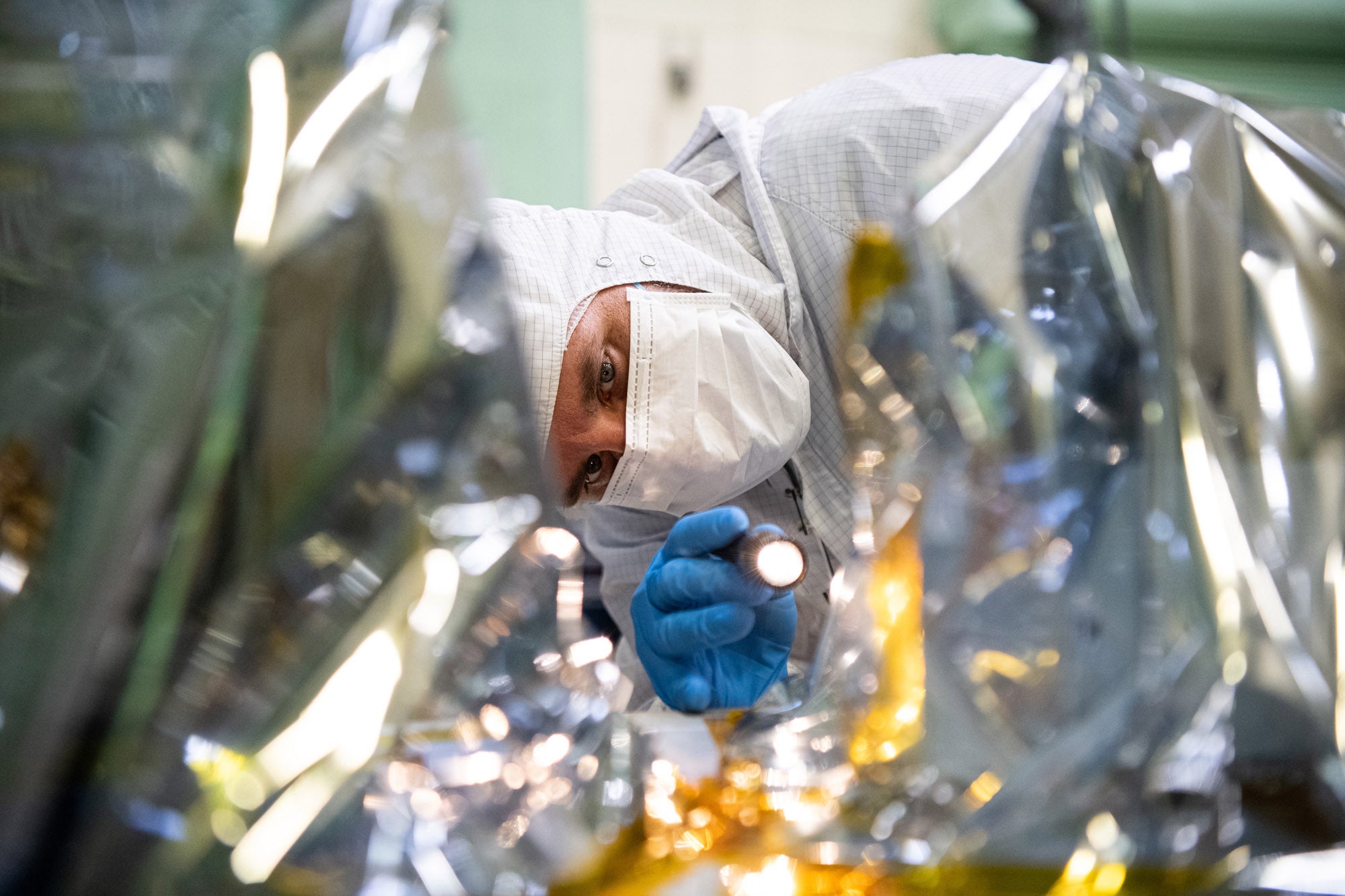Nov. 20, 2024
At NASA’s PACE Hackweek, Sarah Lang, a Ph.D. candidate at GSO, worked on a multi-institutional team to explore how mesoscale eddies—swirling ocean currents spanning 10-100 km—affect phytoplankton ecosystems, which are vital to the overall health of oceanic ecosystems and future climate.
Their project, “GO-SWACE,” combined data from:
- NASA Plankton, Aerosol, Cloud, ocean Ecosystem (PACE) to map phytoplankton distributions with unprecedented spectral detail
- NASA Surface Water and Ocean Topography (SWOT) to resolve ocean currents 10x finer than previous satellite technology
- BGC-Argo Floats to uncover vertical ocean structures
With this trio of tools, the team mapped out the evolution of phytoplankton within an eddy that pinched off the Gulf Stream and propagated away. Their analysis revealed shifts in phytoplankton communities, showing how eddies trap and mix water while transporting carbon and nutrients.

Why does this matter? Phytoplankton are the base of the marine food web and key players in the biological carbon pump, making them essential to understanding ocean health and future climate predictions.
A huge shoutout to the GO-SWACE team: Sarah Lang (URI GSO), Lexi Jones-Kellett (MIT), Marin Cornec (NOAA-PMEL), Md Masud-Ul-Alam (UGA), Tasha Snow (UMD, NASA), and Vivien Puppa Kocsis (Harvard). Sarah reflects, “I learned so much from working with my team members, and it was rewarding to see our ideas and knowledge come together. This was the most rewarding part of the Hackweek for me!!”
The group is excited to continue developing their findings and is already working on a manuscript—stay tuned for updates!


